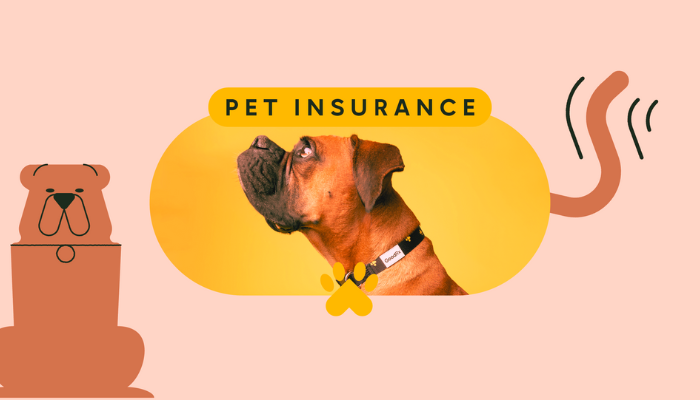Introduction
Pet insurance is increasingly popular among pet owners as it provides a safety net for unexpected veterinary costs. It functions similarly to human health insurance, offering a variety of coverage options depending on the specific needs of the pet and the preferences of the owner. Here’s a comprehensive look at pet insurance, including its types, benefits, considerations, and tips for choosing the right plan.
Types of Pet Insurance Coverage
Accident-Only Coverage
What It Covers: This type of policy is designed to cover veterinary costs that arise from accidents. This includes injuries from car accidents, falls, or other unexpected incidents.
Benefits: Generally lower premiums than comprehensive plans; ideal for pet owners who want basic coverage for emergencies.
Illness Coverage
What It Covers: Covers costs related to various illnesses that your pet may experience, such as infections, allergies, diabetes, and chronic conditions like arthritis.
Benefits: Offers peace of mind for pets that may develop health issues over time, particularly as they age.
Preventive Care Coverage
What It Covers: This optional coverage may include routine veterinary visits, vaccinations, flea and tick prevention, and dental cleanings.
Benefits: Helps maintain your pet’s health and can catch issues early, potentially reducing long-term costs.
Comprehensive Coverage
What It Covers: Combines both accident and illness coverage, providing a broad safety net for a variety of veterinary expenses.
Benefits: Offers the most extensive protection, ensuring that both accidents and illnesses are covered, although it typically comes with higher premiums.
Wellness Plans
What It Covers: Focuses on routine care and preventive measures. This may include vaccinations, check-ups, spaying/neutering, and more.
Benefits: Can help spread out the cost of routine care and encourage responsible pet ownership.
Benefits of Pet Insurance
Financial Protection: Veterinary costs can add up quickly, especially in emergencies. Pet insurance helps mitigate unexpected expenses, allowing you to afford necessary treatments without significant financial stress.
Access to Quality Care: With pet insurance, you can seek out the best veterinary care without being deterred by the cost. This can be especially important for specialized treatments or surgeries.
Peace of Mind: Knowing that you have coverage can alleviate anxiety about your pet’s health, enabling you to focus on their well-being rather than financial implications.
Encouragement of Preventive Care: Many pet owners who have insurance are more likely to take their pets for regular check-ups and preventive treatments, promoting better long-term health.
Considerations Before Buying Pet Insurance
Premium Costs:
Monthly Payments: Premiums can vary widely based on the type of coverage, the pet’s age, breed, and location. Always factor in these costs when budgeting.
Inflation: Premiums can increase over time, so be prepared for potential changes in cost as your pet ages.
Deductibles and Co-Pays:
Understanding Terms: A deductible is the amount you must pay out-of-pocket before the insurance coverage kicks in. Co-pays are the portion of the bill you are responsible for after the deductible is met.
Annual vs. Per-Incident Deductibles: Some plans have annual deductibles, while others may have per-incident deductibles. Understand how these will affect your costs.
Exclusions:
Pre-Existing Conditions: Most policies do not cover pre-existing conditions, so it’s essential to know your pet’s health history.
Specific Breeds: Some insurers may exclude certain breeds or hereditary conditions that are common in specific breeds.
Provider Networks:
In-Network vs. Out-of-Network: Check if your preferred veterinarians are in the insurer’s network, as this can affect your reimbursement rates or the need for upfront payments.
How to Choose the Right Pet Insurance Plan
Assess Your Pet’s Needs:
Evaluate your pet’s health, age, breed, and lifestyle. Older pets or those with chronic conditions may benefit from comprehensive plans, while younger pets may only need accident coverage.
Compare Policies:
Obtain quotes from multiple insurers and compare their coverage options, premiums, and deductibles. Look for reviews and customer testimonials to gauge satisfaction levels.
Read the Fine Print:
Carefully review the policy details to understand what is and isn’t covered. Pay attention to the claims process, waiting periods, and customer service options.
Consider Your Budget:
While it’s tempting to go for the most comprehensive plan, ensure that the premiums fit within your budget. Sometimes, a simpler plan with lower premiums might be more manageable in the long run.
Ask for Recommendations:
Consult with your veterinarian for their recommendations on insurance companies, as they may have insights based on their experiences with different insurers.
Conclusion of Pet Insurance
Pet insurance can be an invaluable tool for managing your pet’s healthcare costs. By providing financial protection against unforeseen accidents and illnesses, it allows you to focus on what matters most—your pet’s health and happiness. When considering pet insurance, take the time to research and understand your options fully. With the right coverage, you can ensure that your beloved pet receives the best possible care without the stress of overwhelming expenses



